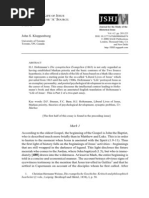Jesus The Jew Geza Vermes Pdf Merge

Geza Vermes—Professor Emeritus of Jewish Studies at Wolfson College in Oxford, U.K.—has long written on the Dead Sea Scrolls as well as on. Jesus as a Jew. His recent trilogy consists of The Passion (2005), The Nativity: History and Legend (New York: Doubleday, 2006), and The Resurrection: History and Myth. This now classic book is a significant corrective to several recent developments in the study of the historical Jesus. In contrast to depictions of Jesus as a wandering Cynic teacher, Geza Vermes offers a portrait based on evidence of charismatic activity in first-century Galilee. Vermes shows how the major New Testament.
The extraordinary answer is that Vermes was fostered by Catholics after his family died in the Holocaust; he was received into the Church at the age of seven and as a young man was ordained a priest. So he has experienced Christ from the inside, as it were, elevating the transubstantiated host and placing Holy Communion on the tongues of the faithful. Later, however, having decided that the host was not what the Church said it was, he rediscovered his Hebrew roots. So he now studies Jesus (rather than Christ) from the outside, as a non-Christian Jew. His first book on the subject, Jesus the Jew, took out of the Lord's mouth all the Hellenistic philosophy that the Fourth Gospel put into it, and left us with the authentic, apocalyptic rabbi of the Synoptic Gospels (Matthew, Mark and Luke). A more recent book, The Changing Faces of Jesus, worked backwards, peeling off the accretions of John, Paul and the dubious passages in the Synoptics to reveal, again, a devout Jew, unorthodox in some of his teachings but as fierce and humourless as a Pharisee in his determination to make people follow them. In The Authentic Gospel of Jesus Christ, Vermes's modus operandi changes: from that of a picture-restorer scraping off layers of varnish to a detective trying to work out - like Sherlock Holmes in The Reigate Squires - who wrote which bits of an incriminating letter.
In this book, Vermes goes through the Synoptic Gospels line by line, occasionally including verses from John and Thomas that have a reasonable claim to authenticity. The process requires ferocious attention to detail. Many genuine sayings or stories of Jesus have later interpolations stuffed into or bolted on to them - but it's not easy to spot the joins. One of the ways you can locate them is to compare versions of the same story in Mark, Matthew and Luke.
Bmw Navigation Firmware Update V32 Download Chrome there. Take the healing of the epileptic boy in Mark 9, Matthew 17 and Luke 9. In Mark, the earliest of the Gospels and the closest to the historical events, Jesus asks the sort of questions a GP might ask before healing the boy: What's the problem? How long has he been like this? In Matthew and Luke, the same healing is reported, but the questions are missing. Vermes suggests that Mark was happy to admit that Jesus was not omniscient; but, by the time Matthew and Luke came along, 'any imperfection of this kind could not be ascribed to the Son of God'. So they blue-pencilled the questions. Although Vermes's central thesis is radical, parts of it have been knocking around in one shape or form for over a century.
Simboli Elettrici Civili Pdf Download. Even so, I suspect that 99 churchgoers out of 100 are unaware of it. The argument goes something like this. The 'pure' Jesus was a messianic rabbi who expected the imminent arrival of a new world (on earth) called the Kingdom of God - a classic millenarian paradise whose occupants would probably all be Jews. Carbon Copy Cloner Serial Key on this page. Much of this vision is preserved in the Synoptic Gospels but, by the time they were written, the evangelists were fed up with waiting for the Kingdom, so, in their accounts, they added references to a vision - borrowed from the Book of Daniel - of the Son of Man coming back on clouds of glory. This Second Coming is also fully described by Paul (confusingly, the earliest author of all, though he never met the earthly Jesus and tells us almost nothing about him).
Then, decades later, the author of John's Gospel - who probably lived among a group of fervent early Christians known to scholars as the Johannine community - produced a Gospel that properly deified Jesus (something not even Paul did) and is an unambiguously Christian document. Put bluntly, John's Jesus is God; Mark's isn't. Admittedly, much of what Vermes says is conjecture. For example, he authenticates one of Jesus's last statements from the cross - 'My God, my God, why hast thou forsaken me?' - on the grounds that it is 'an expression of complete surprise, voiced by a man of limitless faith, in the sudden realisation that there would be no heavenly intervention in his favour'. But he thinks Luke's line, 'Father, into thy hands I commit my spirit', fails the test because it sounds like 'the prayer of a textbook holy man and not of the fiery prophet from Galilee'. How does he know?
Comments are closed.